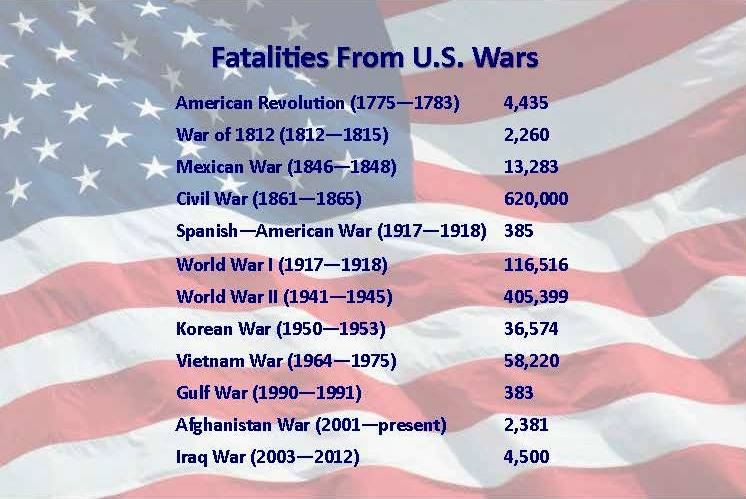Originally called Decoration Day, from the early tradition of decorating graves with flowers, wreaths and flags, Memorial Day is a day for remembrance of those who have died in service to our country. It was first widely observed on May 30, 1868 to commemorate the sacrifices of Civil War soldiers, by proclamation of Gen. John A. Logan of the Grand Army of the Republic, an organization of former Union sailors and soldiers.
During that first national celebration, former Union Gen. and sitting Ohio Congressman James Garfield made a speech at Arlington National Cemetery, after which 5,000 participants helped to decorate the graves of the more than 20,000 Union and Confederate soldiers who were buried there.
This event was inspired by local observances of the day that had taken place in several towns throughout America in the three years after the Civil War. In 1873, New York was the first state to designate Memorial Day as a legal holiday. By the late 1800s, many more cities and communities observed Memorial Day, and several states had declared it a legal holiday. After World War I, it became an occasion for honoring those who died in all of America’s wars and was then more widely established as a national holiday throughout the United States.
The Meaning of Memorial Day
Since the earliest ceremonies in small American towns following the Civil War, we have gathered on Memorial Day to honor and remember those who made the ultimate sacrifice in service to our nation. As in those early days of laying wreaths and placing flags, our national day of remembrance is often felt most deeply among the families and communities who have personally lost friends and loved ones.
This national holiday may also be the unofficial start of the summer season, but all Americans must take a moment to remember the sacrifice of our valiant military service members, first-responders and their families. Memorial Day is a day of both celebration and grief, accounting for the honor of our heroes and reflecting on their tragic loss.
Civil War soldiers had been mustered from towns and villages across the land. Like today, the loss of each soldier was a profound tragedy for both family and community.
Today, we honor service members from all of America’s past wars. But there is immediacy in our sorrow; the wounds of war are new again. As we struggle for ways to heal, Abraham Lincoln’s message of almost 150 years ago can still inspire us.
This, then, is the mission of Memorial Day: to reach out in support of all the soldiers and their families who have sacrificed so much for us.
Throughout America’s history, hundreds of thousands of our fellow citizens have died bravely serving our country. The number of battle deaths speaks to the sacrifices our soldiers and their families have made.
When Is Memorial Day?
In 1971, Congress passed the Uniform Monday Holiday Act and established that Memorial Day was to be celebrated on the last Monday of May. Several southern states, however, officially celebrate an additional, separate day for honoring the Confederate war dead, sometimes referred to as a Confederate Memorial Day: January 19 in Texas; third Monday in Jan. in Arkansas; fourth Monday in Apr. in Alabama and Mississippi; April 26 in Florida and Georgia; May 10 in North and South Carolina; last Monday in May in Virginia; and June 3 in Louisiana and Tennessee.
Memorial Day is celebrated at Arlington National Cemetery each year with a ceremony in which a small American flag is placed on each grave. Traditionally, the President or Vice President lays a wreath at the Tomb of the Unknown Soldier. About 5,000 people attend the ceremony annually.
Memorial Day Traditions
Every Memorial Day, families and communities across the nation take time to honor those who make the ultimate sacrifice in service to our nation. Throughout the land, Americans observe this special holiday in many different ways. Here are a few of the Memorial Day customs:
- Displaying the Flag:On this day, the U.S. Flag should be displayed at half-staff until noon. In the morning, the flag should be raised to the top and then lowered to half-staff. Americans can also honor prisoners of war and those missing in action by flying the POW/MIA flag.
- Visiting Grave Sites: Memorial Day was originally known as Decoration Day because communities honored their dead by decorating their graves with flowers. Today, many communities come together to honor and decorate the grave sites of their fallen soldiers.
- Participate in the National Moment of Remembrance:In accordance with a congressional resolution passed in 2000, Americans pause wherever they are at 3:00 p.m. for a moment of silence to remember and honor the fallen.
- Memorial Day Parades:The Memorial Day parade is a time-honored tradition in communities across America. This is a time for neighbors to come together and to teach their children the importance of remembering those who sacrificed so much for them.
- Brushing Up on Family and American History:This is a great time for your family to get together and look at old photos and share your ancestor’s stories. It’s also an occasion to read historical documents like the Gettysburg Address and have a family discussion on its meaning.
- Wearing Poppies:The tradition of wearing red poppies on Memorial Day was inspired by the 1915 poem “In Flanders Fields” by John McCrea. War worker Moina Michael made a personal pledge to always wear a red silk poppy as an emblem of “keeping the faith with all who died” and began a tradition that was adopted in the United States, England, France and more than 50 other countries.
This article was originally posted at www.pbs.org, we hope you enjoyed it. Sparkle Wash Pressure Washing wishes you and your loved ones a safe and fun Memorial Day weekend celebration.
We invite you to share your Memorial Day memories with our family and friends in the Comment field below.


Recent Comments